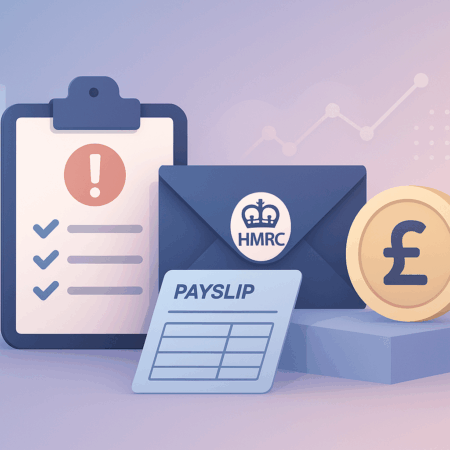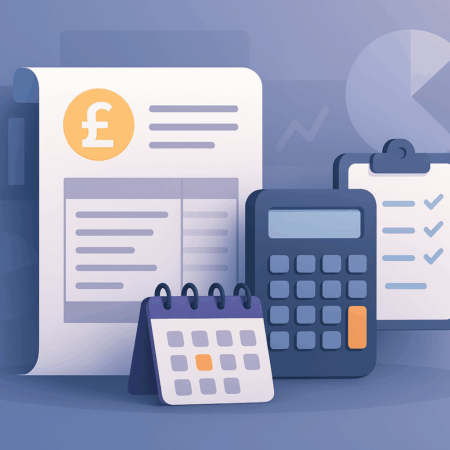In inheriting a property can feel like a bittersweet windfall. On one hand, it’s a valuable asset; on the other, selling it often means facing Capital Gains Tax (CGT) on the profit. Whether it’s your late nan’s cottage in the Yorkshire Dales or a flat in London passed down from a relative, working out your CGT liability can be a proper headache. That’s where a Capital Gains Calculator UK Property comes to the rescue, helping you crunch the numbers without needing a degree in accountancy. In this guide, I’ll walk you through how CGT works for inherited properties in the UK, share a detailed example with proper calculations, and offer tips to keep your tax bill from spoiling the inheritance. Let’s dive in!
Understanding Capital Gains Tax on Inherited Properties
Capital Gains Tax is the tax you pay on the profit (or “gain”) when you sell or dispose of an asset that’s increased in value since you acquired it. For inherited properties, this typically applies when you sell a home you’ve received through a will or intestacy. Key points to know:
- Acquisition Cost: For inherited properties, the “purchase price” is the market value at the date of the previous owner’s death (often determined during probate).
- Exemptions: If the property was your main home, you might qualify for Private Residence Relief (PRR), but this is rare for inherited properties unless you’ve lived there.
- Other Assets: CGT also applies to other inherited assets like shares or valuables, but we’ll focus on property here.
The tax is only on the gain—the difference between the market value at inheritance and the sale price, minus allowable costs like legal fees or improvements. For the 2025/26 tax year, you get a £3,000 tax-free allowance (the Annual Exempt Amount, or AEA), and gains above this are taxed based on your income. A Capital Gains Calculator UK Property simplifies this by doing the maths for you, especially for tricky inherited property scenarios.
Why Use a Capital Gains Calculator for UK Property?
When my friend Rachel inherited her dad’s house in Birmingham, she was chuffed to bits—until she realised selling it would trigger a CGT bill. She hadn’t a clue how to factor in the probate value or her solicitor’s fees. A Capital Gains Calculator UK Property would’ve saved her from hours of panic-googling. These tools let you input:
- The market value of the property at the date of death.
- The sale price (or market value if you gift it).
- Costs like probate fees, legal fees, or estate agent commissions.
- Improvement costs (e.g., modernising the kitchen).
- Your annual income to determine your tax band.
The calculator spits out your CGT liability in seconds, helping you decide whether to sell now, keep the property, or rent it out. Plus, with residential property sales, you’ve got a strict 60-day deadline to report and pay CGT to HMRC, so a calculator’s quick results are a godsend.
CGT Rates and Rules for 2025/26
Here’s the rundown for the 2025/26 tax year:
- Annual Exempt Amount (AEA): £3,000 per individual. It doesn’t roll over, so use it each year.
- CGT Rates for Property:
- Basic-rate taxpayers (income up to £50,270): 18%.
- Higher/additional-rate taxpayers (income above £50,270): 24%.
- Reporting and Payment:
- For residential property, report and pay CGT within 60 days of completion via HMRC’s online service.
- For other assets, include gains in your Self-Assessment tax return by 31 January after the tax year (e.g., 31 January 2027 for 2025/26).
Note: These details are based on HMRC’s latest guidance as of July 2025. Tax rules can change faster than the British weather, so always verify with a tax professional.
Calculating CGT on an Inherited Property: A Real-World Example
Let’s follow Sophie, a 45-year-old nurse from Manchester who inherited her mum’s house and sold it in June 2025. Sophie never lived in the property, so no Private Residence Relief applies.
Scenario: Sophie’s Inherited House Sale
- Market Value at Date of Death (2020): £220,000 (per probate valuation)
- Sale Price (June 2025): £350,000
- Probate and Legal Costs (2020): £4,000
- Selling Costs: £5,500 (estate agent + conveyancing)
- Improvement Costs: £12,000 (new windows and boiler in 2022)
- Sophie’s Income (2025/26): £38,000 (basic-rate taxpayer)
- Other Gains: None this tax year
Step 1: Calculate the Gain
The gain is the sale price minus the market value at death and allowable costs:
[ \text{Gain} = \text{Sale Price} – (\text{Market Value at Death} + \text{Probate/Legal Costs} + \text{Selling Costs} + \text{Improvement Costs}) ]
[ \text{Gain} = £350,000 – (£220,000 + £4,000 + £5,500 + £12,000) = £350,000 – £241,500 = £108,500 ]
Sophie’s gain is £108,500.
Step 2: Apply the Annual Exempt Amount (AEA)
Sophie’s AEA for 2025/26 is £3,000, and she hasn’t used it elsewhere:
[ \text{Taxable Gain} = £108,500 – £3,000 = £105,500 ]
Step 3: Determine the CGT Rate
Sophie’s income is £38,000, within the basic-rate band (£50,270). Add her taxable gain to check if it pushes her into the higher-rate band:
[ £38,000 + £105,500 = £143,500 ]
- Basic-rate band available: £50,270 – £38,000 = £12,270
- Basic-rate CGT: £12,270 × 18% = £2,208.60
- Higher-rate CGT: (£105,500 – £12,270) × 24% = £93,230 × 24% = £22,375.20
- Total CGT: £2,208.60 + £22,375.20 = £24,583.80
Step 4: Report and Pay
Since this is a residential property, Sophie must report and pay £24,583.80 to HMRC within 60 days of completion (by August 2025). A Capital Gains Calculator UK Property would’ve given her this figure instantly, letting her plan her finances without breaking a sweat.
What If Sophie Was a Higher-Rate Taxpayer?
If Sophie’s income was £60,000 (higher-rate band), her entire taxable gain would be taxed at 24%:
[ \text{CGT} = £105,500 \times 24% = £25,320 ]
A calculator would adjust for this, showing how income impacts the final bill.
Tips to Reduce Your CGT on Inherited Properties
Nobody wants to see their inheritance eaten up by taxes. Here are some ways to keep your CGT bill down, based on my experience helping clients:
- Use Your AEA: Claim your full £3,000 allowance. If you’re married, transfer part of the property to your spouse to use their AEA (spousal transfers are usually CGT-free).
- Include All Costs: Don’t forget probate fees, legal costs, or improvements like new windows. Keep records to prove these deductions.
- Offset Losses: If you’ve sold another asset (e.g., shares) at a loss, use it to reduce your gain in the same tax year or carry it forward.
- Check for PRR: If you lived in the inherited property as your main home for a period, you might qualify for partial Private Residence Relief, including the final 9 months of ownership.
- Plan Strategically: Consider holding the property longer or renting it out to spread gains over multiple tax years, keeping them in the basic-rate band.
A client of mine once saved thousands by selling an inherited flat over two tax years to maximise their AEA. A calculator can help you test these options.
Common Mistakes to Avoid
Inherited properties come with unique CGT pitfalls. Here’s what to watch out for:
- Using the Wrong Base Cost: The “purchase price” is the market value at the date of death, not what the deceased paid. Check the probate valuation.
- Missing the 60-Day Deadline: Report and pay CGT within 60 days for property sales, or face HMRC penalties.
- Forgetting Costslast: Overlooking probate or improvement costs can inflate your gain. Dig out those receipts!
- Ignoring Income Impact: Your gain is added to your income, potentially pushing you into the 24% band. A calculator highlights this risk.
Choosing a Reliable Capital Gains Calculator for UK Property
Not all calculators are created equal. Look for one that:
- Is updated for 2025/26 (£3,000 AEA, 18%/24% rates).
- Handles inherited properties, including probate values and improvement costs.
- Accounts for your income to calculate the correct tax band.
- Comes from a trusted source like HMRC, TaxScouts, or Optimise Accountants.
- Offers clear steps for reporting to HMRC.
Wrapping Up
Selling an inherited property can be emotional, and the last thing you need is a complicated CGT bill adding to the stress. A Capital Gains Calculator UK Property is like a trusty friend, giving you a quick, accurate estimate of your tax liability so you can focus on what matters—honouring your loved one’s legacy. Whether it’s a Manchester terrace or a rural retreat, crunching the numbers early can save you from a tax shock.
Planning to sell an inherited property? Pop your details into a calculator, and if the numbers look daunting, have a chat with a tax advisor. A bit of planning now can keep more of your inheritance in your pocket.
Sold an inherited property? Got a CGT tip? Share it in the comments below!









